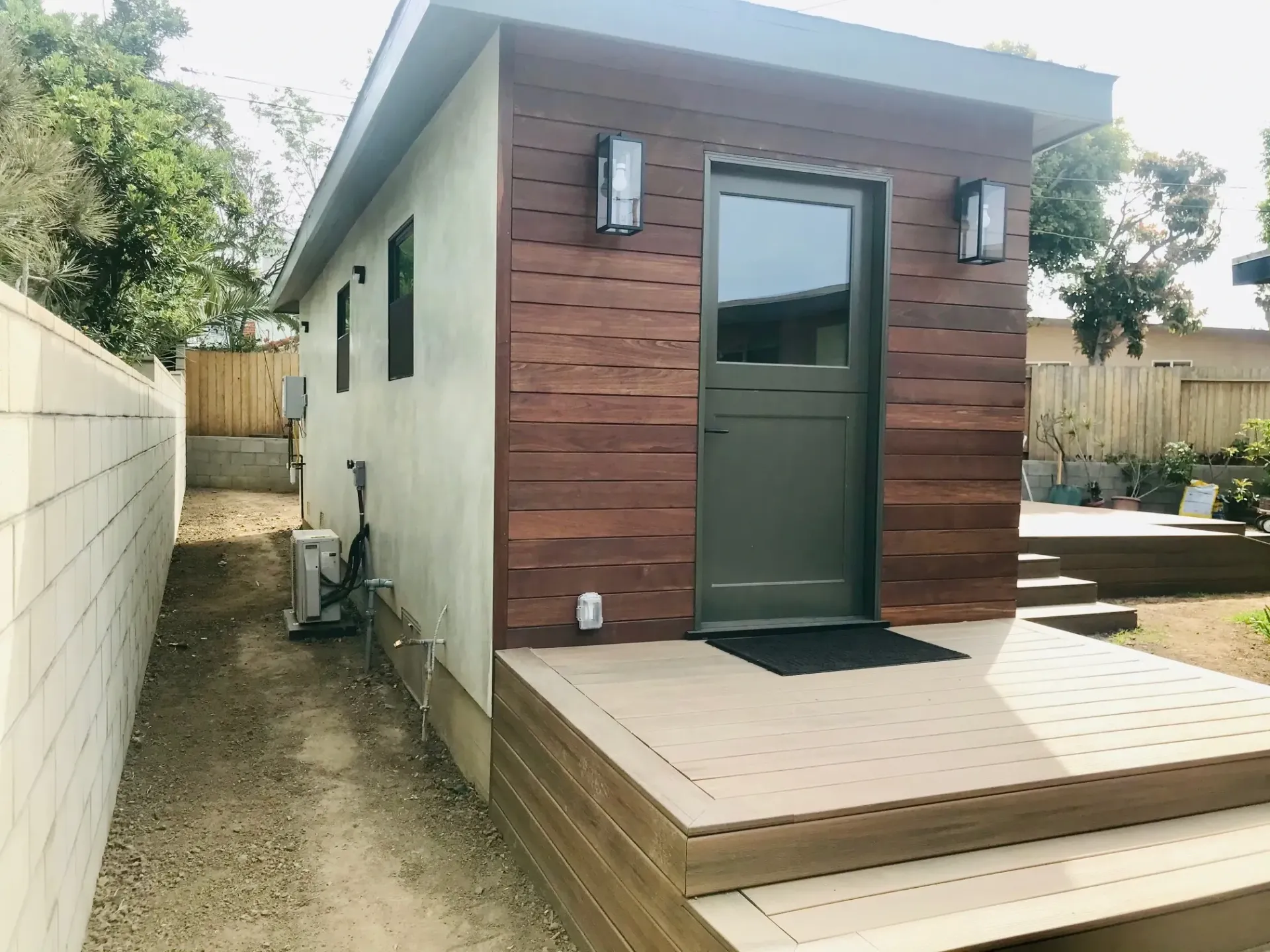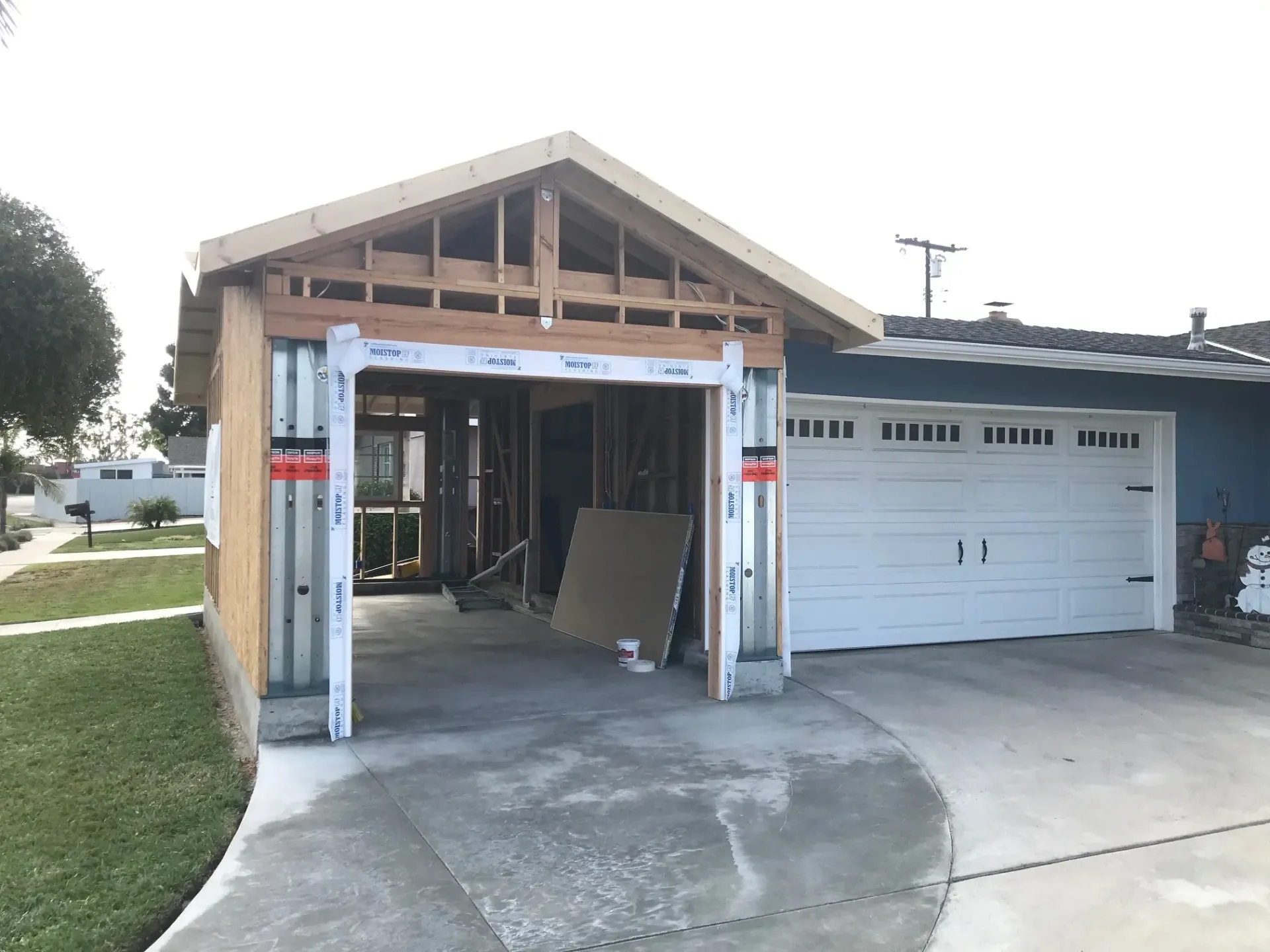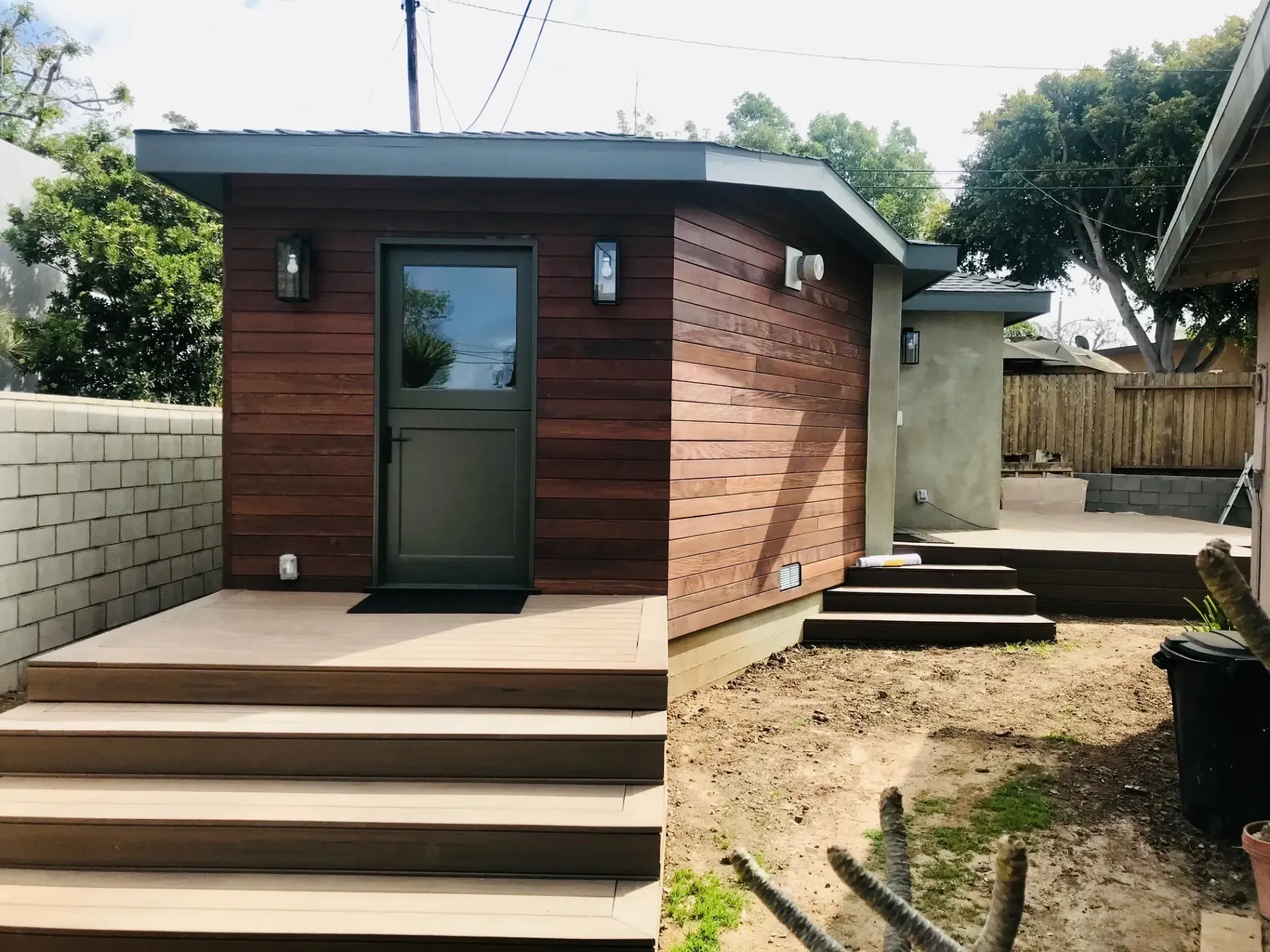The Rise of Accessory Dwelling Units (ADUs) for Aging in Place
In post-World War II America, "mother-in-law suites" or "granny flats" were popular housing units located behind suburban homes. However, zoning laws eventually limited their construction. Today, there is a resurgence of interest in these units, now known as accessory dwelling units (ADUs), and they are providing real benefits to older Americans (AARP). ADUs are smaller, secondary homes built on a parcel zoned for a detached house. Many cities and states have passed laws to remove restrictions on ADU development, aiming to create affordable housing and curb urban sprawl. California, for example, legalized ADUs in 2017, leading to a significant increase in permits issued for their construction (AARP).

Aging in Place with ADUs
ADUs offer a unique opportunity for older adults to age in place while maintaining their independence and staying connected to their communities. Dana Cuff, a professor of architecture and director of the think tank CityLab at UCLA, emphasizes that ADUs allow people to have a different living arrangement as they age, without the stress of moving to a new neighborhood. These units provide various options for older adults, such as downsizing to a separate, more accessible home on their property, renting out the main house, or using the ADU as living quarters for a caregiver or relative who requires care. ADUs can also generate rental income for retirement and help offset construction costs (AARP).
The Benefits of ADUs for Aging in Place
1. Maintaining Community Connections
ADUs allow older adults to stay connected to their communities. Alan DeLaTorre, the Age-Friendly Program manager in Portland, Oregon's Bureau of Planning and Sustainability, highlights the importance of preserving these connections. Many older Americans live in homes that were not designed with mobility considerations in mind, such as multiple levels or structures built above street level. These barriers can force older individuals out of their homes before they are ready to move. ADUs, designed with mobility in mind, provide a solution that allows older adults to remain in their communities (AARP).
2. Senior-Friendly Design
Unlike traditional homes, ADUs can be designed with seniors' specific needs in mind. Features such as wider doorways, no-step entries, low-curb showers, and grab bars in bathrooms contribute to a safer and more accessible living environment. These modifications promote independence and reduce the risk of falls, which is a significant concern for older adults. Additionally, modern construction practices make ADUs more energy-efficient, resulting in lower heating and cooling costs. A survey conducted by AARP found that 67 percent of adults would consider living in an ADU to be close to someone while still having their own separate space (AARP).
3. Affordable Housing Solutions
The lack of affordable housing is a pressing issue, especially for older Americans. ADUs offer a potential solution by providing a more affordable housing option for both homeowners and renters. The cost of constructing an ADU can range from around $40,000 to several hundred thousand dollars, depending on the size and customization. Renting out the ADU can help older adults generate additional income for retirement and offset the construction costs. ADUs also provide an opportunity for multigenerational living, where grown children can live in the main house while their parents reside in the ADU (AARP).
The Growing Popularity of ADUs
ADUs have gained significant attention and popularity, with cities and states recognizing their potential to address housing shortages and the specific needs of older adults. Portland, Oregon, has been at the forefront of encouraging ADU development since around 2010. The city has implemented measures such as loosening zoning restrictions, streamlining permitting processes, and offering incentives for ADU construction. In 2021, ADUs accounted for an estimated 15 percent of approved housing units statewide in California. These numbers demonstrate the growing acceptance and adoption of ADUs as a viable housing solution (NYT).
Creative Solutions for Aging in Place
Addressing the housing needs of older Americans requires a multifaceted approach. ADUs are just one piece of the puzzle. Other innovative solutions are being explored, such as cohousing developments that encourage intergenerational living and age-friendly modifications to existing homes. Intergenerational housing communities, like Cully Grove in Portland, aim to foster connections between older residents and younger families. These communities provide a sense of support, purpose, and mutual assistance. Bridge Meadows, another housing development in Portland, combines affordable housing for older adults with homes for families affected by the foster care system. The residents form a close-knit community, supporting and engaging with one another (NYT).
Overcoming Challenges and Promoting Change
While the benefits of ADUs for aging in place are evident, there are still challenges to overcome. Some areas have restrictive zoning laws and other barriers that hinder the development of ADUs. Policy changes, such as loosening restrictions, clarifying design standards, streamlining approval processes, and improving financing options, are necessary to promote the widespread adoption of ADUs. Additionally, a shift in mindset is needed among community leaders, developers, and the general public to recognize the changing housing needs of an aging population and embrace creative solutions. As the population continues to age, it is imperative that housing options evolve to meet the demands and preferences of older adults (NYT).
Conclusion
ADUs offer a promising solution for older adults seeking to age in place while maintaining their independence and connections to their communities. These smaller, secondary homes provide a range of benefits, including senior-friendly design features, affordable housing options, and the opportunity for multigenerational living. As cities and states continue to embrace ADUs and explore other innovative housing solutions, the goal of enabling older adults to age in place becomes more attainable. It is crucial to address the challenges and promote policy changes that support the development of ADUs and other age-friendly housing options. By doing so, we can create a future where older adults can thrive in their communities and enjoy a high quality of life (AARP) (NYT).
Gettler Construction is the leading ADU builder company in Orange County, specializing in the construction of high-quality accessory dwelling units. With years of experience and a commitment to customer satisfaction, Gettler Construction can help turn your ADU dreams into a reality. Contact us today to discuss your ADU project and explore the possibilities of creating a comfortable and functional living space for your loved ones.
You might also like
Home Insights and Inspirations




